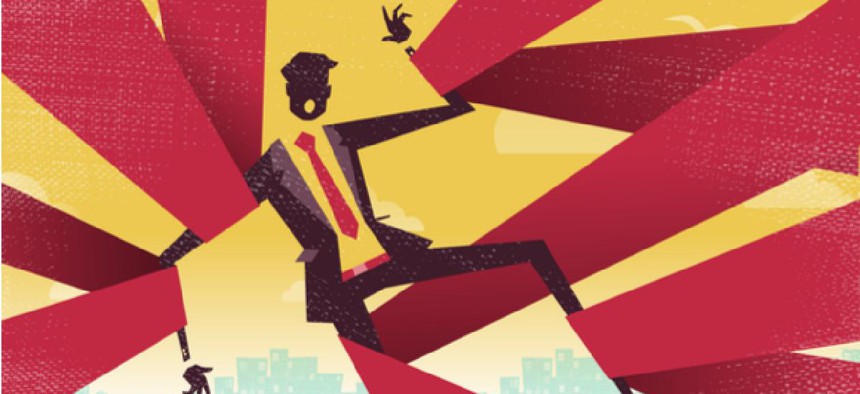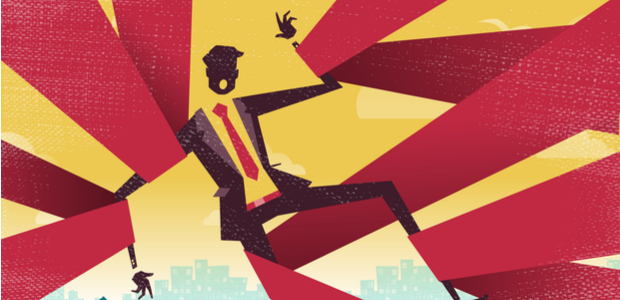Will an IT update revamp government?

Reimagined tech and modernization funds can accomplish only so much if policies and processes don't keep pace.

Talk to government CIOs long enough, and one topic almost sure to come up is how much the outdated nature of the federal government’s organizational structure is holding back the transformational potential of technology. The Internal Revenue Service may still be relying on software from the 1960s, but the business process behind that technology is even older, developed and codified for a completely different era.
“To what extent do we modernize not only the pipes, but also the business processes, the policies that are themselves arcane and sub-optimized?” asked Stan Soloway, a former Department of Defense executive who is now CEO of Celero Strategies.
The vision at the center of a federal-agency CIO's dream is an enterprise organization that is completely horizontal, devoid of the kind of bureaucratic silos and petty turf battles that inevitably lead to technology balkanization.
As one example, former federal CIO Tony Scott pointed to the red tape that exists any time two agencies want to set up an exchange of information. Before any collaboration can begin, the organizations must negotiate a lengthy and explicit legal agreement with a narrowly defined purpose, scope and time period. The result is “a one-off interface between agency A and agency B [that’s] viewed more as a technical issue rather than a strategic asset or value,” he said.
Further, a core principal of good data governance is speed, or being able to share and disseminate pertinent information to stakeholders in a timely and efficient manner. If data is the new oil, then the federal government’s lengthy bureaucratic and siloed business model is the equivalent of punching a hole in the side of your oil tanker before it sets sail.
“The old governance model, the old analogue way of doing business is quickly rotting away in terms of its ability to serve the customer,” said Scott. “What I was trying to do [as federal CIO] is start to remove some of those structural barriers that are in place for the modernization period.”
Mark Forman, global vice president for the public sector group at Unisys, served as administrator for the Office of E-Government -- the predecessor to the federal CIO position -- under President George W. Bush. In his mind, there is no emerging technology, policy or law that would have a greater impact on federal IT than flattening the federal government’s organizational structure. Modernization has the potential to start nudging the government in the right direction, he suggested.
“CIOs in government have to now define an operating model,” Forman said. “That’s probably the single biggest change versus five or 10 years ago. ”
That model has started to come into view over the past few years as the push for IT modernization has presented an opportunity to rethink the way that agencies execute their overall mission. The centerpiece of the White House modernization plan envisions a federal government that is largely powered by the cloud, maximizes the use of shared services and thinks about IT as a service as opposed to a collection of tools.
Many hope that modernization will place the CIO position in a central role when it comes to improving agency operations. Accenture's Dave McClure characterized modernization as an opportunity for IT executives in government to demonstrate the value that newer business methods like agile development, human-centered design thinking and “DevOps” have been not only to IT operations but to the overall success of large, complex organizations.
Modernization, then, represents a period of technological transition that “puts the CIO in a much more powerful role, a partnership role with the business leads in the agencies” to develop new solutions and innovate at speed and scale, said McClure, who has served in both the Government Accountability Office and the General Services Administration.
Not everyone is so optimistic. Dave Wennergren, a former Navy CIO who is now a managing director with Deloitte, said he worries that “we could be missing a huge opportunity” when it comes to modernization. On the one hand, he flagged a series of pressing issues – legacy IT systems, cybersecurity, moving to a web-based mobile world, leveraging the government’s vast troves of untapped data – that all flow naturally into the position’s authorities.
“All these things that are sort of top federal issues, global issues,” he said. “They all seem to me to have a really strong component of a role of the CIO.”
But Wennergren believes that the federal government plotting out the next few decades of federal IT strategy with so many acting and non-permanent CIOs in place is a contradiction that threatens to undermine the moment.
“It should be the halcyon days for CIOs but to me there seems like there’s a disconnect in places, between the art of the possible about what could be done…and how we’re organized to do it,” he said.
Much of the money, time and effort being sunk into federal IT modernization could be wasted if it winds up being implemented inside of a bureaucratic process that has more in common with the industrial revolution than the digital revolution. By updating the technology but not the process, the government runs the risk of simply developing new islands of automation that don’t help in dealing with modern policy issues.
“It’s like putting lipstick on a bulldog… nobody is understanding the new business processes or infusing the benefits of technology,” said Forman. “So, you’re just getting prettier websites so you have a lot of electronic paperwork. That doesn’t help.”
NEXT STORY: DHS CIO plans multi-cloud strategy


